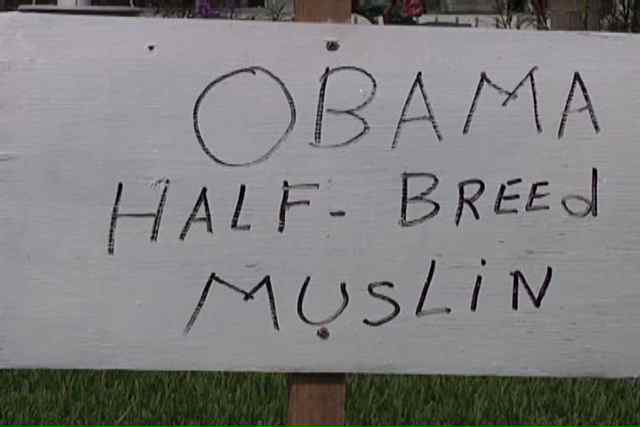I just saw one of these signs in my neighbors’ yard (image found here):
The reason it struck me is that a) I’m quite certain it’s the first time I’ve ever seen a pink campaign sign and b) it made me remember the criticisms of the Kerry/Edwards yard signs from the 2004 campaign (see this post). The Democratic candidates’ signs were described as lacking confidence, whereas the Republicans’ logo exuded masculinity and assertiveness, which supposedly reinforced stereotypes of Democrats as weak and uncertain and Republicans as aggressive and strong. It’s a sign of the many unexpected events of this campaign season that just four years later Republicans would feel comfortable putting out a pink yard sign because they’re actively playing up the femininity of one of the candidates. It’s not just that they’re emphasizing that she’s female; I’m pretty sure if Hillary Clinton had won the Democratic nomination, she wouldn’t have pink yard signs. I have a feeling that the Democrats, facing the stereotype that they’re weak and uncertain, wouldn’t want to take the chance of having yard signs in a color associated with femininity, even if they had a female candidate, but that’s just a hunch.












